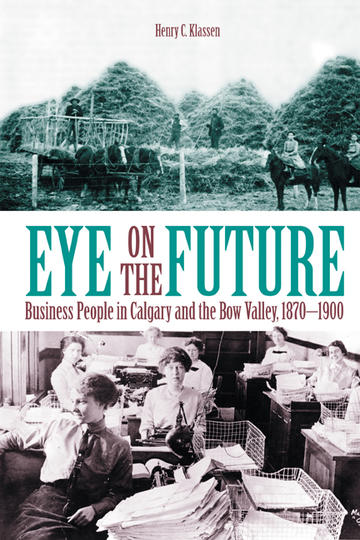Calgary and the Bow Valley's business climates were lively, competitive, and capitalistic in the late 1800s. Eye on the Future sheds light on the challenges of building and maintaining business in this area during this time of vast growth. It provides insight into how entrepreneurs, retailers, manufacturers, bankers, farmers, and ranchers pioneered a booming business world. In this dynamic and readable study, Klassen considers the obstacles that faced business and civic leaders: how to promote the economic growth of the city; how to create demand for goods and services; how to finance transportation improvements such as streets, bridges, roads, and railways; and how to assimilate substantial social and political change.
Weaving a strong cast of determined Albertans together with a study of the climate that supported growth and change, Klassen discusses the successes and failures of businesses in this region. Ultimately, it is about how a few people—Isaac G. Baker, Agnes K. Bedingfeld, and James A. Lougheed—helped to create the conditions in which Calgary emerged as a city and the Bow Valley an important agricultural centre.
Eye on the Future is a Who's Who of Calgary's (and the nearby rural hinterland's) pioneer business class . . . With his superb command of the region's history and archival sources, Klassen has produced a picture rich in intricate detail and nuance. No doubt, Eye on the Future will remain the classic reference on the first three decades of Calgary's business history
—A.A. Den Otter, The Canadian Historical Review
The great strengths of Klassen's approach are its inclusive view, the detailed face he is able to put on business, and his ability to see the opportunities and challenges of businesses from within the enterprise. Klassen is particularly effective in bringing previously overlooked businesspeople, like women, into his field of vision.
—H.V. Nelles, Business History Review
Klassen is a superb miniaturist. He deftly sketches the origins, the strengths and the foibles of scores of entrepreneurs who established the foundations of business activity in the Bow Valley during the last decades of the nineteenth century. Each cameo portrait glows with authenticity because it is based on meticulous archival research.
—Simon M. Evans, Western Historical Quarterly



